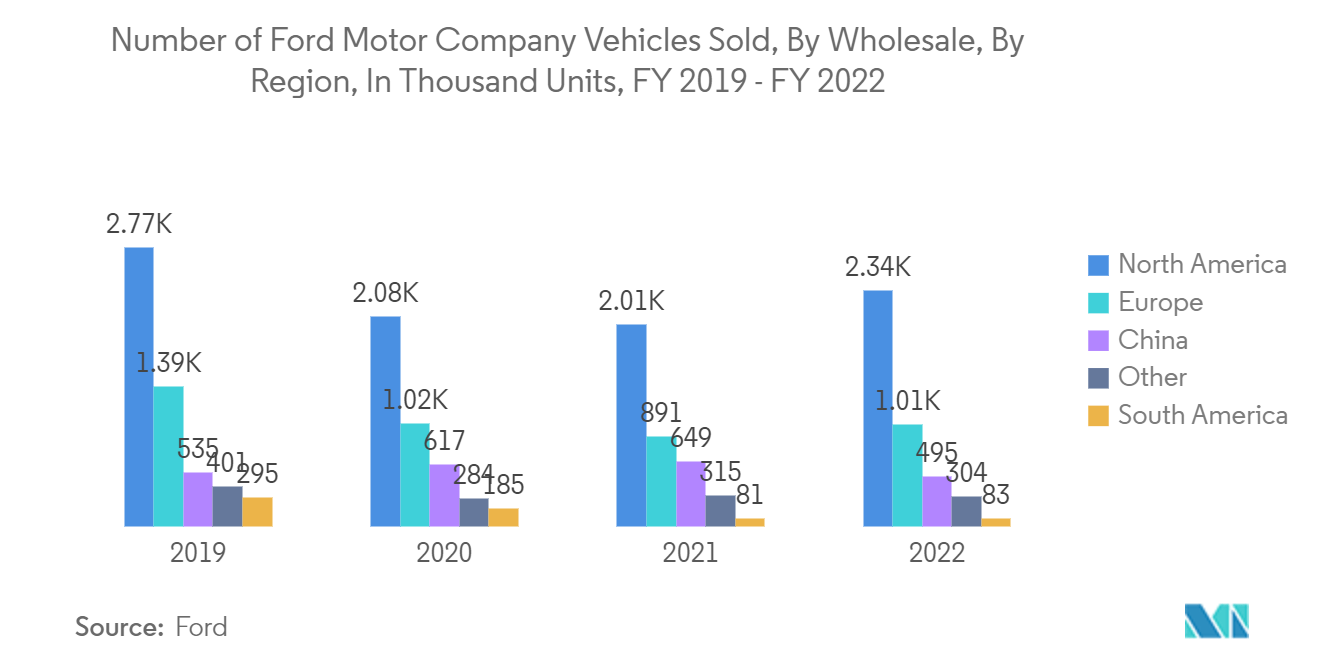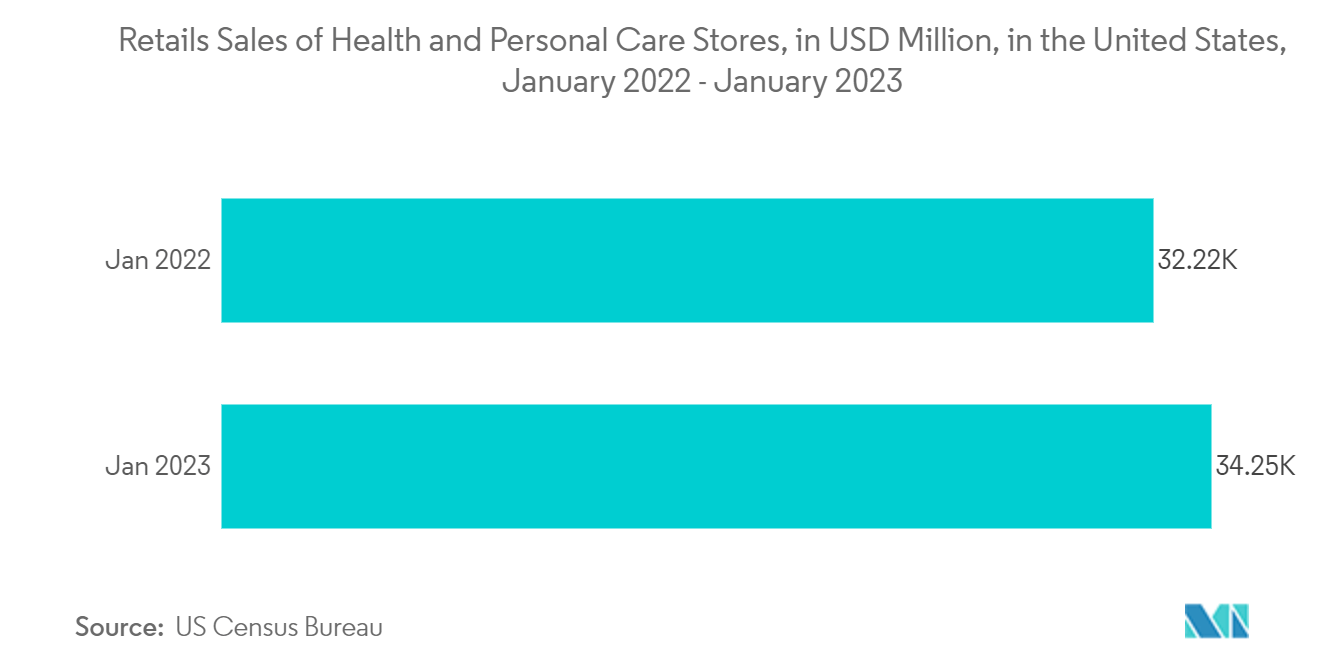Market Trends of North America Aerosol Cans Industry
Automotive/Industrial Segment to Drive the Market
- The packaging industry has enhanced the functionality of aerosol cans for storage, transportation, and consumer convenience. According to the Energy Information Administration's (EIA) most recent monthly report published on August 2023, the US crude oil production is projected to reach an all-time high of 12.76 million barrels per day (bpd) in 2023, rising by 850,000 bpd. Aerosol cans provide a convenient and precise method for applying lubricants.
- With the growing availability of lubricants, users may prefer aerosol cans for their ease of use and accurate application, especially in hard-to-reach or complex machinery parts. According to Ford's annual report, North America has the company's highest sales base of motor vehicles, which amounted to 2,335 units in 2022, after a slight dip in the past years after the COVID-19 pandemic. The burgeoning sales of vehicles around the globe are predicted to cause a surge in the automotive aftermarket in the future years, which will, in turn, push up the requirement for aerosol cans in the automotive segment.
- These cans are also used in automobiles for various painting and maintenance purposes. Apart from the thriving automotive industry, rapidly expanding production also impacts the demand for aerosol cans in the market. This is because aerosols are used heavily for tool cleaning and degreasing and the maintenance of factory machinery worldwide. This, in turn, allows factories and manufacturing facilities to maintain their optimum production volumes.
- According to an American Automobile Association report published in October 2023, for every mile driven, the average vehicle owner spends an average of 9.83% on vehicle maintenance and repairs (up by 1.6% in 2022). This equates to an average of USD 1.474.50 per 15,000 miles per year. As consumers spend more on maintaining and repairing their vehicles, they are likely to keep them in better condition for longer. This can result in higher vehicle ownership rates and a larger pool of potential customers for automotive aerosol products.
- Aluminum cans have a higher recycling rate and contain more recycled content than other competing packaging types. According to the Aluminum Association, it is one of the most recycled materials on the market, saving more than 90% of the energy required to produce new metal and reducing production costs. In April 2022, Ball Corporation partnered with Recycle Aerosol LLC to boost the recycling rates of aluminum aerosol cans in the United States. The collaboration increases aerosol can recycling and establishes a closed-loop system in which used cans are recycled into new aerosol cans.

United States is Expected to Account for the Largest Market Share
- The packaging industry has increased the utility of aerosol cans for storage, transportation, and convenience of use, making these packaging solutions efficient and fulfilling most requirements. The demand for aerosol cans is expected to increase due to the expansion of the personal care sector in the United States, which is related to consumers' increased disposable income and ability to purchase luxury goods. Aerosols are commonly used in personal care products, and the market is projected to profit from their increased sales.
- Aerosols are the mainstay of treatment for pulmonary diseases such as asthma, cystic fibrosis, and COPD. In addition, aerosols are also being used for systemic drug delivery. Patients need safe, reliable, portable, and easy-to-use devices. The growth of the medical segment can be credited to the increasing demand for dry powder respiratory inhalers and metered dose inhalers in the country. Growing pollution has led to a rise in asthma patients, which is anticipated to propel the demand for aerosol containers in the upcoming period.
- According to the Bureau of Labor Statistics, the number of pharmacists in the United States has increased from 311 thousand in 2019 to over 325 thousand by 2022. With more pharmacists available, there may be an increase in the overall volume of prescriptions filled. This could result in a higher demand for pharmaceutical products, including those delivered through aerosol cans, such as inhalers or topical sprays.
- Notably, as per the data from the US Census Bureau, the retail sales of health and personal care stores in the United States have increased from USD 32,224 million in January 2022 to USD 34,246 million in January 2023. Many consumers are looking for chemical-free alternatives in their beauty products. Aerosol metal cans can be advantageous for products that need to be formulated without certain chemicals, as they allow for controlled dispensing and minimal exposure to air, reducing the need for preservatives.
- Aerosol cans are an easy, user-friendly way to dispense paints and varnishes. They eliminate the need for additional equipment like brushes or rollers, making them a preferred choice for many consumers, including homeowners and DIY enthusiasts. According to the US Census Bureau, till August 2023, construction spending across the country amounted to USD 1,284.7 billion, 4.2% higher than USD 1,233.4 billion for the same period in 2022. As construction activity expands, there is a greater demand for paints and coatings to finish and protect newly constructed buildings and structures.

